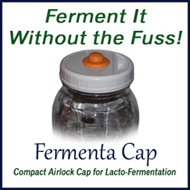Cows
Brown Swiss Cow
Our neighbor down the hill loved his Brown Swiss cow, Bossy. He was a grandpa who had immigrated from Switzerland and spoke with a delightful accent. He sold us milk every few days until the butcher came to slaughter his beef cow and killed the milk cow instead. My sister soon after bought a Guernsey, and we then sold milk to him. And that is only the beginnings of the tales regarding our Swiss neighbor who's idea of fun with the neighbor kids was to engage us in cowpie fights.
The Brown Swiss has a fairly complicated heritage in the US. In Switzerland, the cattle are triple purpose. In the US, they have been selected for dairy traits. In Canada, a beef variety has been developed which goes by the name of Braunvieh. Here in the US, if you find a Brown Swiss, it is likely to be bred up for dairy, and no longer has strong multi-purpose traits.
Brown Swiss are the third most common dairy breed in the US, and they have been used in crosses to "improve" some other dairy breeds. Unfortunately, in their own path to "improvement", they have lost some of the traits for which our neighbor's cow was known - a thick layer of yellow cream topped every jar of milk we bought from him. Contemporary Brown Swiss cattle have a higher percentage of butterfat than Holsteins, but they've lost some of the rich yellow color.
This cow performs well on pasture, and is a good choice for pastured dairy cattle. Their milk production is about four fifths of the production of Holsteins, but the slightly smaller build of the animals (requiring less feed per animal), and the richer milk more than makes up for it.
- Type - Dairy
- Size - Medium to Large
- Production Capacity - Exceptionally good production for their size.
- Special Features - A long lived breed.
- Best for Farms - Pasture based dairy farms, and small self-sufficient farms can both benefit from the good quality and high quantity of milk production.
- Eggs, Milk, Meat Features - Higher butterfat and protein than Holstein, with higher vitamin A content also.
- Other Products - Excellent choice for veal calf production.
- Historic or Contemporary Significance - One of the oldest dairy breeds in the world, and a well respected breed in the US.
- Housing and Space Requirement - Typical.
- Regional Adaptations - Well adapted to cold climates, but adaptable to other conditions.
- Feed Requirement - High milk production requires plentiful feed, or good pasture.
- Other Considerations - Less likely to be crossed with Holsteins, since people who choose this breed do so for strong reasons that include AVOIDING Holsteins. The specific bloodlines that you are selecting from though, are important, because some have retained the older genetics and the cattle have a slightly smaller size, a little lower milk production, but higher butterfat and protein content, and much yellower cream. Those that have been bred up for higher production have paler cream. Try before you buy, to make sure which set of genetics you are getting.
A NOTE ABOUT COWS:
It seems that the Holstein is the bane of the Heritage Cattle world. Holsteins were bred for one purpose - to produce milk as fast as possible, and as much as possible, regardless of reduction in quality (which is significant, the cream is a washed out white color, and they have the lowest butterfat percentage and the lowest protein percentage of all cattle, and do not even produce enough butterfat for their milk to qualify as "whole milk" straight from the cow!).
Historic breeds were adapted for various conditions, and as a result, came in many sizes, with higher quality milk than the Holstein. Some cows have twice the butterfat (this is a GOOD THING!), and quite a bit more protein than the Holstein, and whereas the milk of a Heritage cow generally has cream that rises yellow to the top of the jar, and is the same color as most butter in the stores, many breeds have lost the richness and high vitamin A content in the milk, to crossing with Holsteins to increase production (high vitamin A content is a combination of diet and genetics).
Honestly folks, if you are going to take a Jersey, or Guernsey cow, and turn it into a Holstein, why bother? Just use a Holstein and stop corrupting Heritage breeds and calling them purebreds!
We've lost much of the nutrition of whole milk, and we've lost the quality of meat produced by slower growing cattle. When cows are pushed to produce abnormally fast, or abnormal amounts of milk or meat, the body of the cattle takes shortcuts, resulting in meat that is more difficult for many people to digest, and milk that has lower nutritional value.
So, if we are going to get back to Heritage Cattle, we really need to make sure the cows we are preserving are those that do NOT have Holstein blood in them.
Our preference for raising cattle is on pasture, but we realize that many small farms must compromise due to a lack of space. Especially those microfarms where cow's milk is needed, but space is very limited.
We really don't recommend having a milk or beef cow on a farm that is less than 5 acres. Goats, or even sheep, are more suited to smaller farms for milk production. Even so, sometimes it ends up being a necessity when cow's milk is better digested than goat milk, or when a family requires the ability to easily make butter.
One of the great misunderstandings about cattle is that they can only eat four things: Grass, Alfalfa, COB (Corn, Oats, and Barley), and Pelleted Feed. This is a great nutritional disservice to cows, who can eat a wide range of feeds, including much garden produce, many plants that grow in mixed pastures very well (not just grasses, but clovers, vetch, field peas, wildflowers, and much more). Mixed pastures are superior forage for cattle, providing a wider range of nutrition, lots of seed heads, and good mixed hay for winter. Providing good mixed pasture can reduce or eliminate the need for grain, and make pelleted feed completely unnecessary (we think it SHOULD be unnecessary).
Cows come in a range of sizes, from miniature (such as the Dexter), up to those as large as the Holstein. In between we have the Jersey, the Brown Swiss, and other cattle of varying sizes.
Miniature cows usually less than half the milk of a full sized cow, and will produce less than half the amount of beef as well - often only a quarter. They fit on far less pasture though, and can be raised on 2 acres or so, instead of 5-10 per cow (for good grazing, without excessive damage to the land). They may be a good choice for many people, in part because they may feel much easier to handle than larger cattle.
One of the great losses in Heritage Cattle is the virtual disappearance of Dual Purpose cattle. Too often, Dual Purpose cattle breeds have been "preserved" only by up-breeding for beef production. The milking qualities have been lost to this. This is one reason why some breeds have split, with the Milking variety retaining the historic Dual Purpose traits, and being the more rare, and the Beef variety being the more common. With the majority of breeds though, milking traits have been entirely lost, and only beef traits remain, which has caused these breeds to lose much of their utility on small self-sufficient farms, where Dual Purpose cattle are of far more value than single purpose.
This change in historic breeds is one reason that many breeds which originally would have been excellent choices for our listings, are not found here. Honestly, one more beef breed that has nothing distinctive in performance over any other beef breed, and which is so rare as to be impossible to obtain, is not a practical option for small farms!
The breeds we chose to list are those that we feel have the most value and are most worth preserving for homesteads, microfarms, small self-sufficiency farms, and small pasture based farms.
 Click to Download Your Free Heritage Pickling and Culturing e-Book Now!
Click to Download Your Free Heritage Pickling and Culturing e-Book Now!
Instant Download, NO Registration Required!






